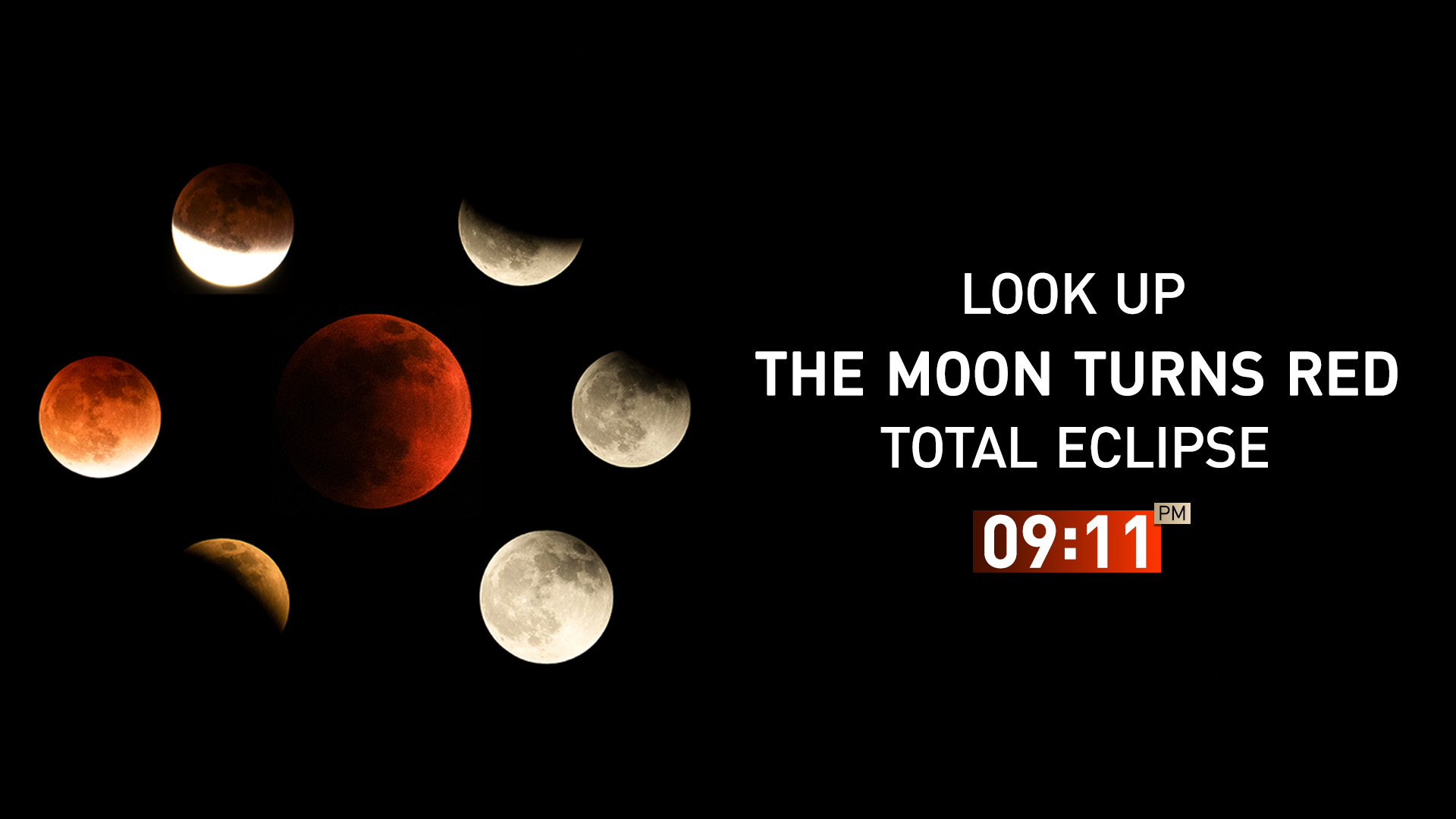Kurdistan Astronomical Organization: Full ‘Blood Moon’ Eclipse Begins 6:28 PM
A total lunar eclipse will be visible across Kurdistan and the Middle East tonight, the Kurdistan Astronomical Organization announced. The celestial event will begin at 6:28 PM, with the Moon turning a dramatic red during the total eclipse phase, offering a stunning spectacle for skywatchers.

ERBIL (Kurdistan24) – Skywatchers across the Kurdistan Region, Iraq, and much of the Middle East are set to witness a captivating and awe-inspiring celestial event tonight as the full moon passes directly through the Earth's shadow, creating a total lunar eclipse that will temporarily paint the lunar surface in dramatic reddish hues. The eagerly anticipated phenomenon, often referred to as a "Blood Moon," will offer a stunning naked-eye spectacle for millions, transforming the familiar silvery glow of the moon into something otherworldly.
In a formal announcement to the Kurdistan24 website, Azhy Chato, the President of the Kurdistan Astronomical Organization, provided a detailed timeline for the event, urging the public to turn their eyes to the heavens to observe the cosmic alignment. "At 6:28 minutes this evening, the phenomenon of lunar eclipse in the Kurdistan Region and the countries of the Middle East will begin," Chato stated. He confirmed that the most dramatic portion of the eclipse will unfold over a significant period, continuing "for a duration of one hour and 20 minutes."
The celestial display will reach its peak later in the evening. "At 9:11 minutes at night, in the Kurdistan Region a total lunar eclipse will occur," the President of the Kurdistan Astronomical Organization announced, specifying the moment when the moon will be fully engulfed in the darkest part of the Earth's shadow. The entire astronomical event will conclude as the moon gradually exits the shadow, with Chato noting that "until approximately 12 o'clock at night when the phenomenon will completely end."
As explained by the Kurdistan Astronomical Organization and the fundamental principles of astronomy, a lunar eclipse occurs only during a full moon, at the precise moment "when the Earth falls between the Moon and the Sun." This perfect three-body alignment, known as syzygy, causes the Earth to block the sun's light from directly reaching the moon, casting our planet's vast shadow across the lunar surface.
The eclipse will unfold in several distinct stages, beginning with the moon's subtle entry into the Earth's faint outer shadow, the penumbra, around the 6:28 PM start time announced by Chato. This initial phase is often difficult to discern with the naked eye, appearing as a slight dimming of the lunar disk.
The more dramatic partial phase begins as the moon starts to move into the Earth's dark inner shadow, the umbra. Observers will see a dark, curved bite being taken out of the moon, which will grow progressively larger as the alignment becomes more precise.
The climax of the event, the total eclipse scheduled for 9:11 PM, occurs when the moon is completely submerged within the umbra. It is during this period of totality, which Chato indicated will last for one hour and twenty minutes, that the moon takes on its famous reddish or coppery glow.
This eerie coloration is not a sign of any change on the moon itself, but rather a beautiful and complex optical effect created by Earth's atmosphere. While the Earth blocks direct sunlight, some light is refracted, or bent, as it passes through our planet's atmospheric limb. This is, in effect, the light from all of the sunrises and sunsets occurring on Earth at that moment being projected onto the moon.
The atmosphere scatters away most of the blue-colored light, allowing the redder wavelengths to pass through and illuminate the eclipsed moon, creating the "Blood Moon" spectacle. The exact shade of red can vary depending on the amount of dust and clouds present in Earth's atmosphere at the time.
Unlike a solar eclipse, which requires special protective eyewear to prevent permanent eye damage, a lunar eclipse is perfectly safe to view directly with the naked eye, binoculars, or a telescope. The event offers a unique opportunity for families, students, and amateur astronomers to engage with the cosmos without any specialized equipment.
For millennia, before the scientific principles behind them were understood, lunar eclipses were often viewed with fear and superstition, interpreted as powerful omens.
In ancient Mesopotamia, a region whose astronomical legacy is deeply connected to the lands of modern-day Iraq and Kurdistan, eclipses were seen as celestial portents directly related to the king and the state. Cuneiform tablets reveal that Mesopotamian astronomers were remarkably adept at predicting eclipses and, to ward off any evil foretold by a lunar eclipse, would often install a "substitute king" for the duration of the event to bear the brunt of any divine wrath, while the real king remained safely hidden.
Today, thanks to the work of scientists and organizations like the Kurdistan Astronomical Organization, such events are no longer sources of fear but are celebrated as moments of scientific wonder and shared human experience.
The announcement by Azhy Chato serves not just as a timetable, but as an invitation for the public to participate in a grand cosmic display, fostering an appreciation for the elegant and predictable mechanics of our solar system.
The eclipse will be a shared event, visible to a vast swathe of humanity across the Middle East, Africa, and Europe, connecting skywatchers in Erbil, Sulaimani, and Duhok with millions of others who will be looking up at the same transformed moon.
As the Earth's shadow begins its slow march across the lunar face tonight, the people of the Kurdistan Region will have a front-row seat to one of nature's most beautiful and accessible astronomical phenomena.
